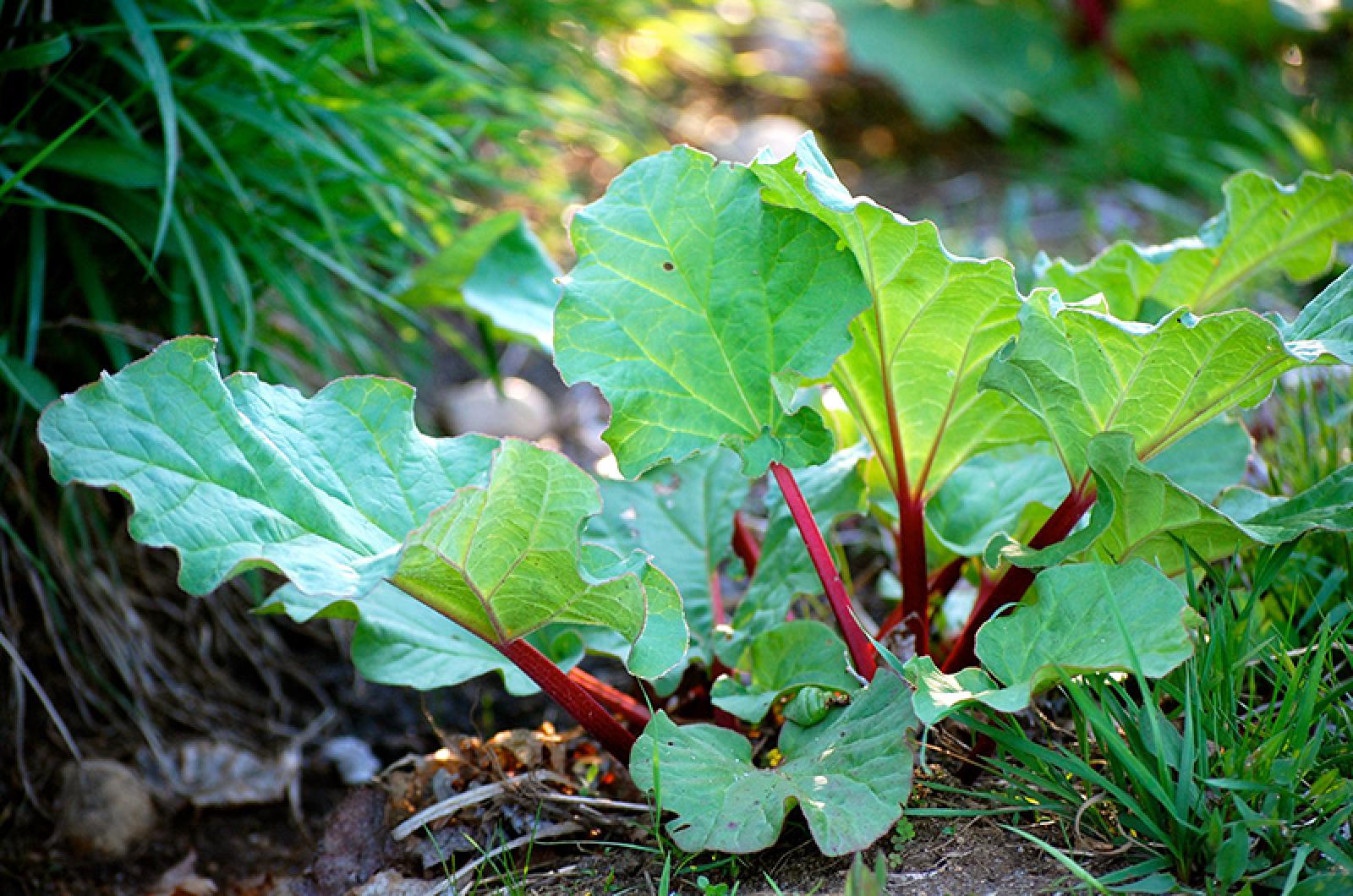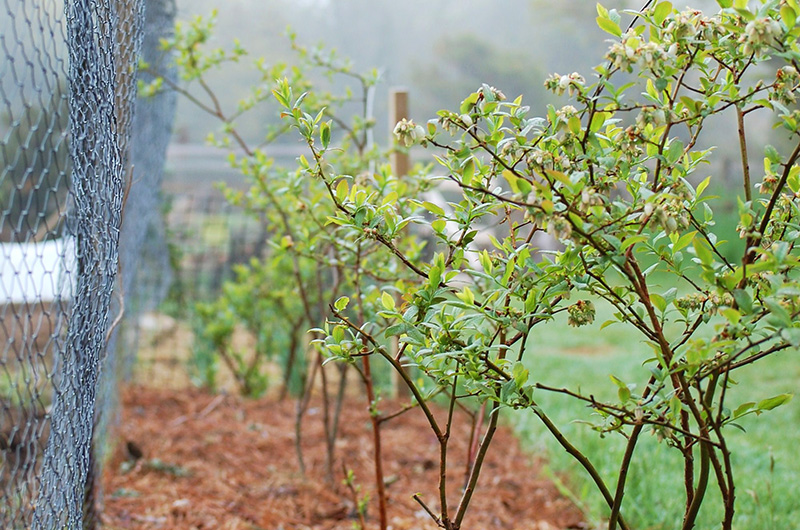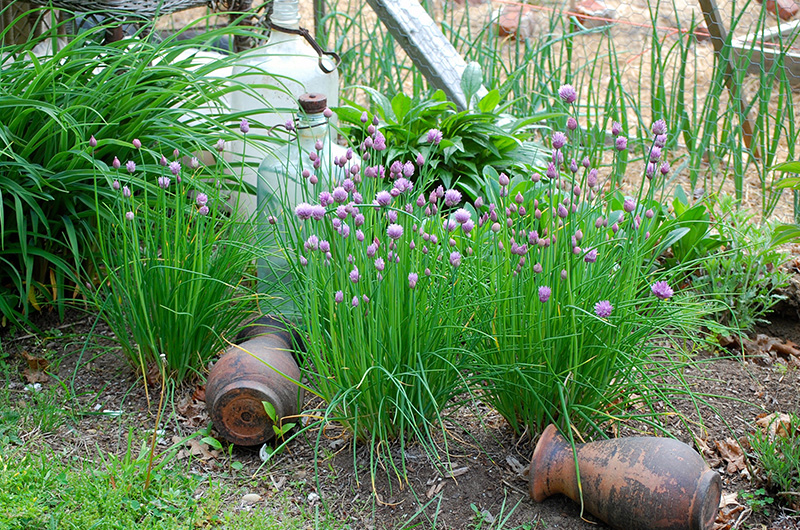Between gray skies and rainstorms, I ventured out and bought two blueberry bushes and two rhubarb plants this week. Are they in my budget? Not really, but it’s not like I’ve had an abundance of treats in this time of abundant caution.
Besides, I’ve got an overwhelming urge to plant perennials. Edible perennials. This is a hopeful gesture, mind you; we’re talking long-term gratification, not instant. Actually, I’m not the only one. Lots of folks have been asking about ways to be more self-sufficient and what to plant in their vegetable gardens that will come back every year. I wrote about asparagus a few weeks ago, and I wanted to get back to this topic to cover some of the other goodies that actually give you a pretty nice long-term return on your up-front investment. Of course what do I know, since like the asparagus, I left my last rhubarb plants and blueberry bushes behind on the farm. Oh, well.
But hey, I did learn a few things on that farm. First (even if you are an impulsive plant buyer, ahem), you need a plan if you’re going to plant berry bushes, fruit trees, hardy herbs, or edible shrubs. They take time to get established and you don’t want to be moving them every year. And choosing a location isn’t just about sun and soil. As I learned the hard way, water and infrastructure are just as important.
The short lesson on water: Don’t plant miles away from water access. Before planting, consider how water will get to your plants, and, once it gets there, how it will be distributed. Ideally you’d lay down drip irrigation so that plants get steady water at the roots and not from overheard — especially while they are getting established. Also be wary of planting in low areas that don’t drain well. Most perennial roots do not like to be soggy.
While infrastructure on a farm can refer to anything from a pea trellis to a high tunnel, in the home garden, pest protection is the biggest hassle. Birds love berries of all types, and Island deer have gotten so bold that some now snack on the toxic leaves of rhubarb. (I guess they eat the edible stalks, too, but they’re not very discerning. Go figure.) So you will have to channel your inner MacGyver to outsmart them.
This is why I’m having a real dilemma about where to plant my Blue Jay and Jersey blueberries, which will grow about five feet tall and a few feet wide. I’d love to plant them near the house, where their beautiful red fall foliage and shrub-like shape will let them do double duty as landscaping plants.
On the other hand, maybe I should just extend the fenced vegetable garden to make room for the blueberries, where they can be permanently enclosed on all sides and also easily covered with netting on top. I’ve seen some beautiful blueberry cages on this Island, and honestly, they are probably the way to go if you really want to have berries to freeze and preserve.
If you don’t cage blueberries, you’ll still have to put stakes around them (while berries are ripening) to hold up bird netting so that the netting doesn’t get tangled in the branches. And the bottom of the nets must be secured, or tiny birds and clever squirrels will find a way in.
Beyond infrastructure and water, of course sun and soil are important. Blueberries thrive in acidic soil, which is why they grow happily on our piney Island. You may already have acidic soil, but for good measure, add peat moss to the hole you dig for your blueberry. For the best fruit production, pick a full-sun spot and plant two bushes for cross-pollination.
Rhubarb likes a sunny, well-drained spot, lots of compost, and a bed of mulch. Another mistake I made (for your benefit — I was planning ahead) was sticking rhubarb in a grassy area that hadn’t been properly cleared. The plants were never happy with the competition from grass and weeds. Even if you think you don’t like rhubarb (and if so, you haven’t tried this Gingery Strawberry Rhubarb Crisp recipe on cookthevineyard.com), I really encourage you to plant some for the colorful cheer it offers as one of the first edible plants to emerge in spring.
And though blueberries top my list of favorite edible fruit plants, I’d love to plant a fruit tree or two as well.
Native Earth Teaching Farm’s Rebecca Gilbert reminded me that pear trees grow especially well on the Island. And then I found out why. Polly Hill executive director Tim Boland explained that they’re much easier to grow than other members of the rose family (which include apricots, cherries, and even apples), because pears originated in the rocky, gravelly soils of Eurasia and are comfortable in our outwash geology. Our neighbors had two towering pear trees that yielded huge crops most years. Asian pears grow well on the Island too. Apples can be a bit more persnickety but newer disease-resistant varieties are available. Check Mahoney’s (which always stocks a lot of fruit trees) and other Island nurseries for recommendations.
It turns out there is a long list of other plants (both fruits and vegetables) that will come back every year on the Vineyard, judging by an informal poll I took that yielded suggestions ranging from lovage and Egyptian walking onions to Jerusalem artichokes and horseradish (both difficult to eradicate once planted). Grapes, red currants, and gooseberries are popular, and of course blackberries and raspberries. Peaches, quince, cherry and paw paw, too. Some greens, like Good King Henry and Slyvetta arugula, will return.
We’ll have to come back to this topic again, but for now, let’s add one last category: hardy herbs. They’re easy to grow in any soil type, incredibly versatile in the kitchen, and definitely cheaper to grow than buy. Chives and garlic chives would top my list, followed by a few members of the mint family (including oregano, hyssop, and lemon balm), planted in their own area. Next, English thyme and a sage or two. I’d try tarragon and lavender (again), even though they’re hit-and-miss perennials on the Vineyard. And lastly I’d sow some borage, which isn’t technically a perennial, but it self-sows so madly that it comes back every year. Its tiny purple flowers are perhaps the most delightful edible you’ll ever grow.









Comments
Comment policy »